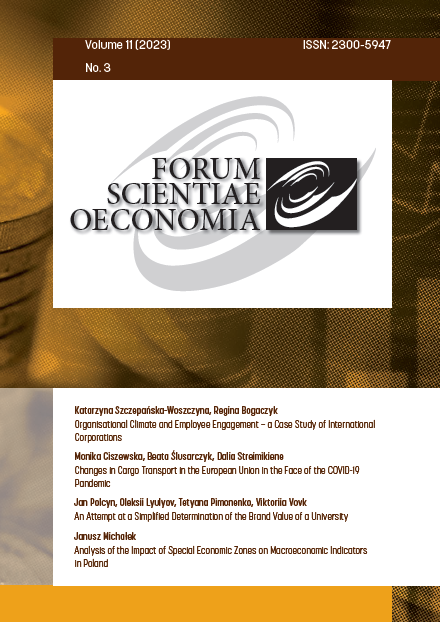Analysis of the Impact of Special
Economic Zones on Macroeconomic
Indicators in Poland
Analysis of the Impact of Special
Economic Zones on Macroeconomic
Indicators in Poland
Author(s): Janusz MichałekSubject(s): National Economy, Business Economy / Management, Economic policy
Published by: Wydawnictwo Naukowe Akademii WSB
Keywords: Special Economic Zone; macroeconomic growth; Poland;
Summary/Abstract: A Special Economic Zone (SEZ) is a designated geographical area with specific economic regulations and incentives to promote foreign investment and boost economic growth. The present study aims to analyse the impact of SEZs on the macroeconomic indicators of Poland. This study investigates the relationship between Poland’s Special Economic Zones and the Polish economy from 1998 to 2020, employing a vector autoregressive model using ordinary least squares regression to analyse time series data on annual SEZ tax exemptions (TEx_SEZs) and macroeconomic indicators, such as GDP, foreign di- rect investment, employment growth rate, and per capita income. The methodology includes descriptive analysis, correlation analysis, augmented Dickey-Fuller (ADF) tests for stationarity, an Engle-Granger two-step cointegration test to estimate the long-run equilibrium relationship, and Granger causality analysis to explore whether TEx_SEZs influence economic growth. The results of regression analysis indicates that the total tax exemption for Special Economic Zones (TEx_SEZs) does not directly contribute to economic growth, the employment growth rate, and per capita income in Poland, aligning with the non-causal relationship found between TEx_SEZs and GDP. However, the study shows that TEx_SEZs have a statistically significant and positive impact on Poland’s foreign direct investment (FDI), implying that SEZ tax incentives can effectively attract FDI and stimulate economic growth. While the reliance of this study on secondary data and the limited depth of the analysis constitute limitations, future research should employ diverse datasets, case studies, and interviews to address these constraints and explore the socioeconomic and environmental impacts of special eco- nomic zones in Poland and other countries.
Journal: Forum Scientiae Oeconomia
- Issue Year: 11/2023
- Issue No: 3
- Page Range: 69-86
- Page Count: 18
- Language: English

